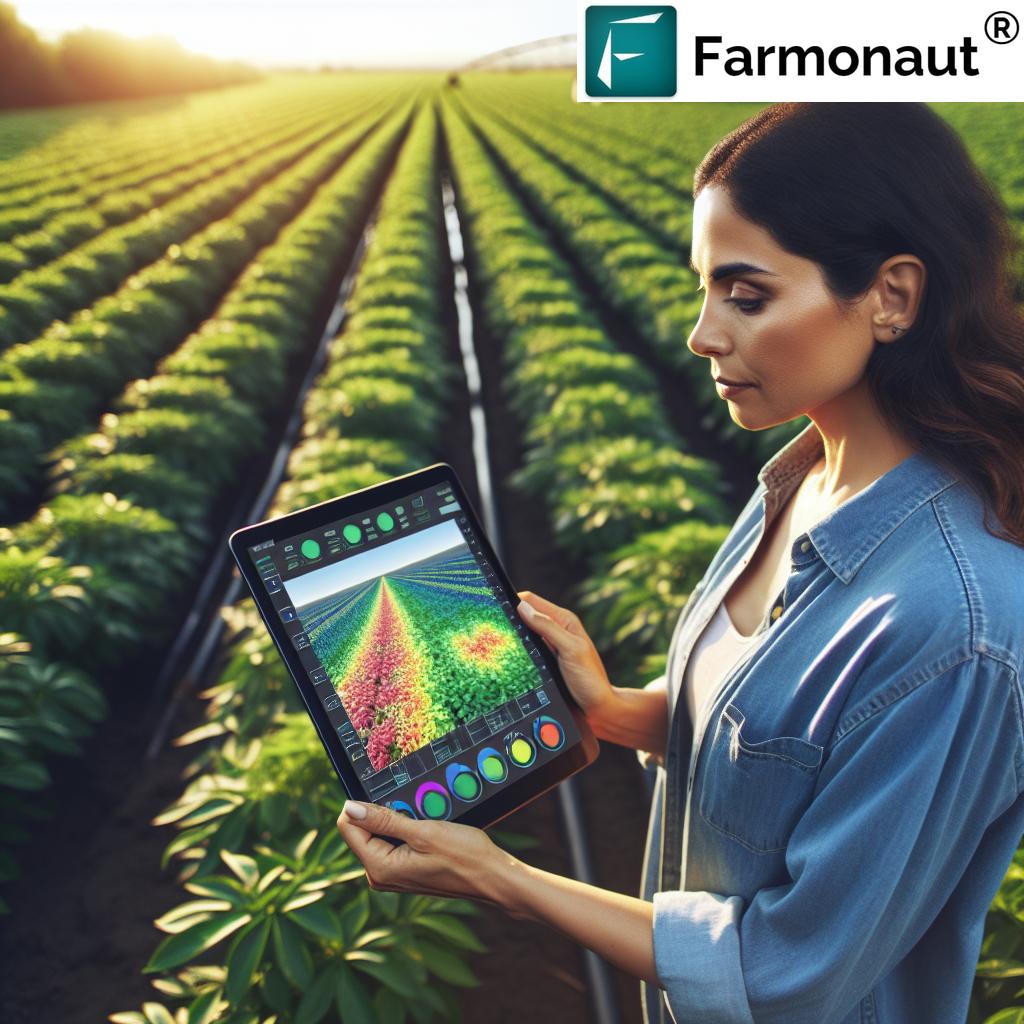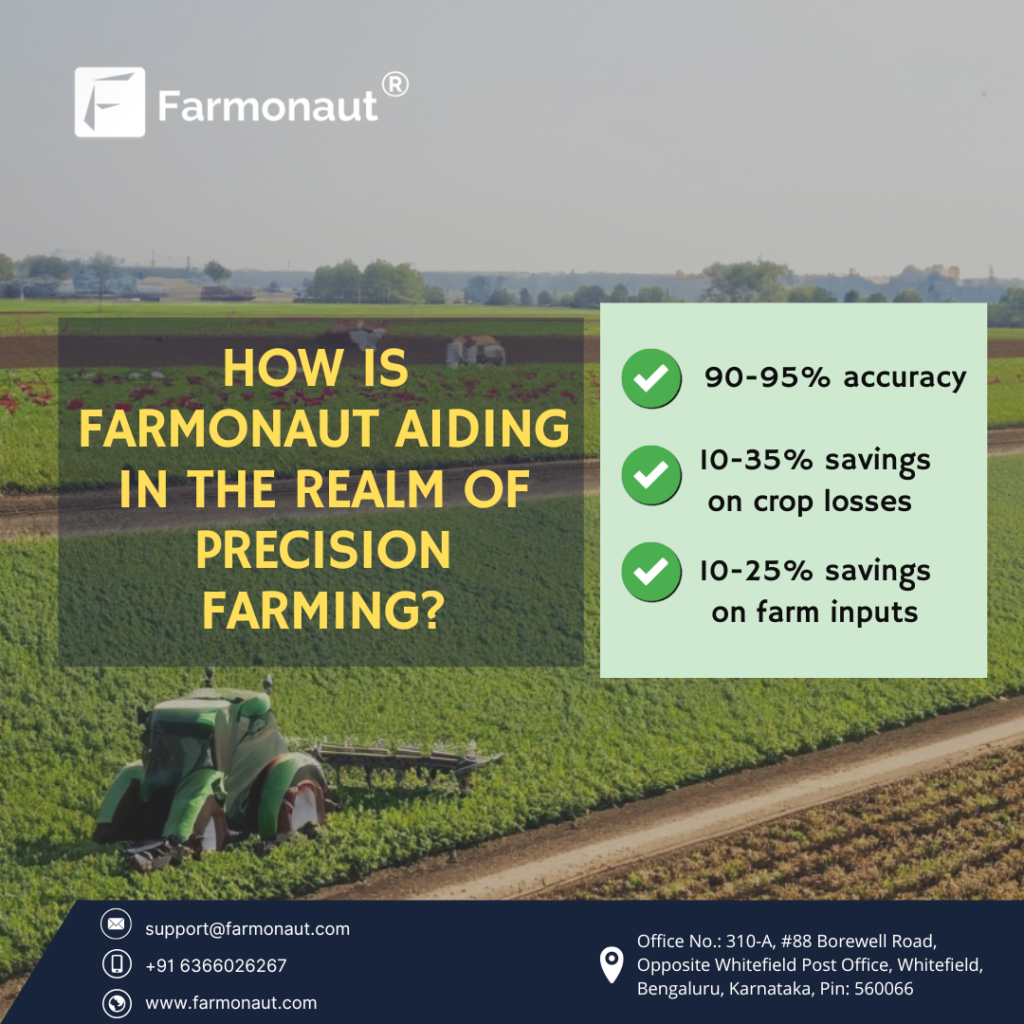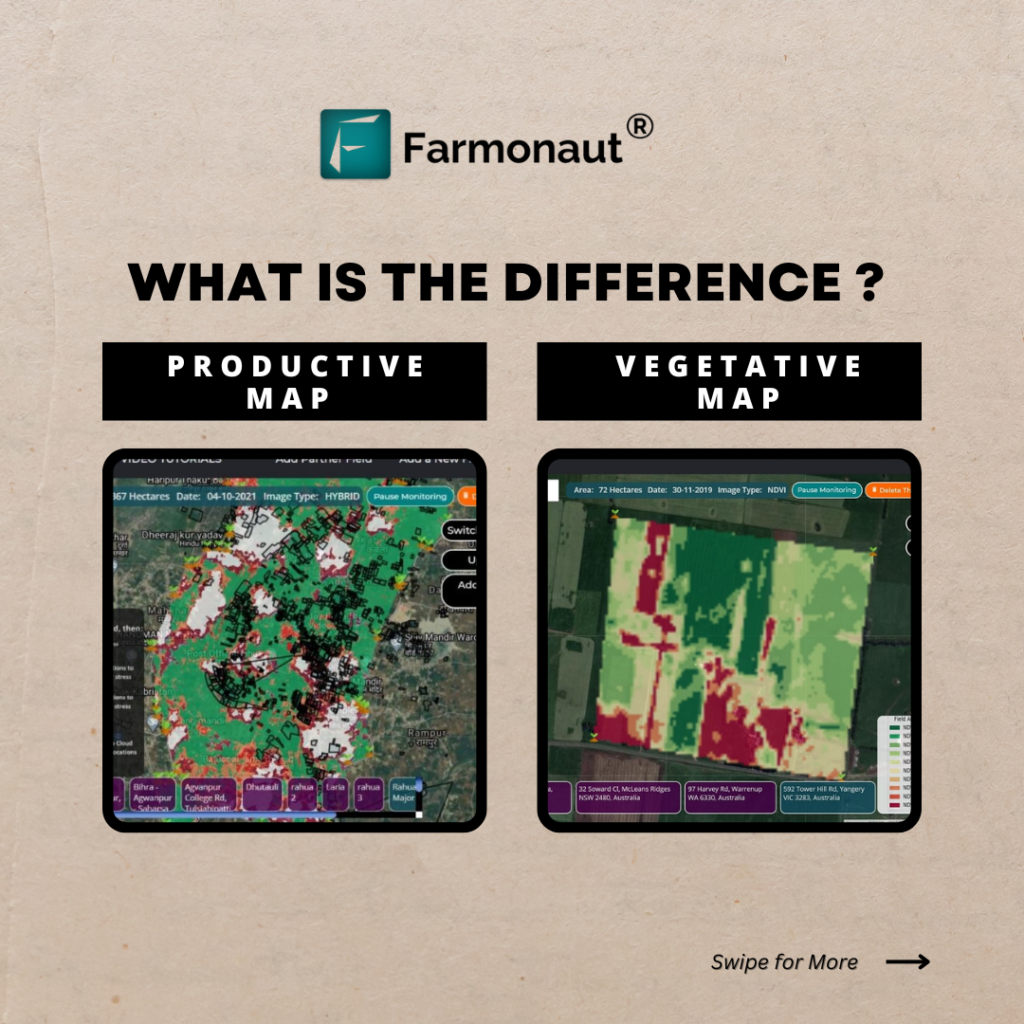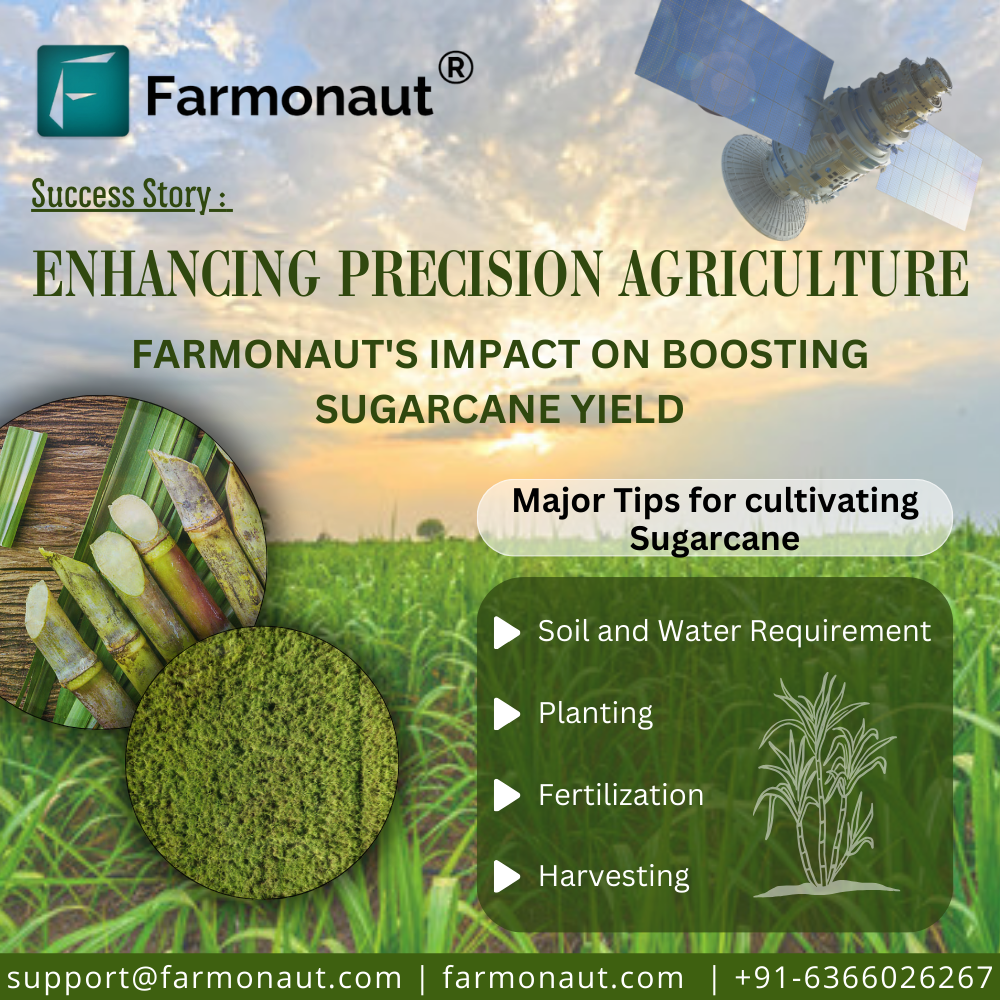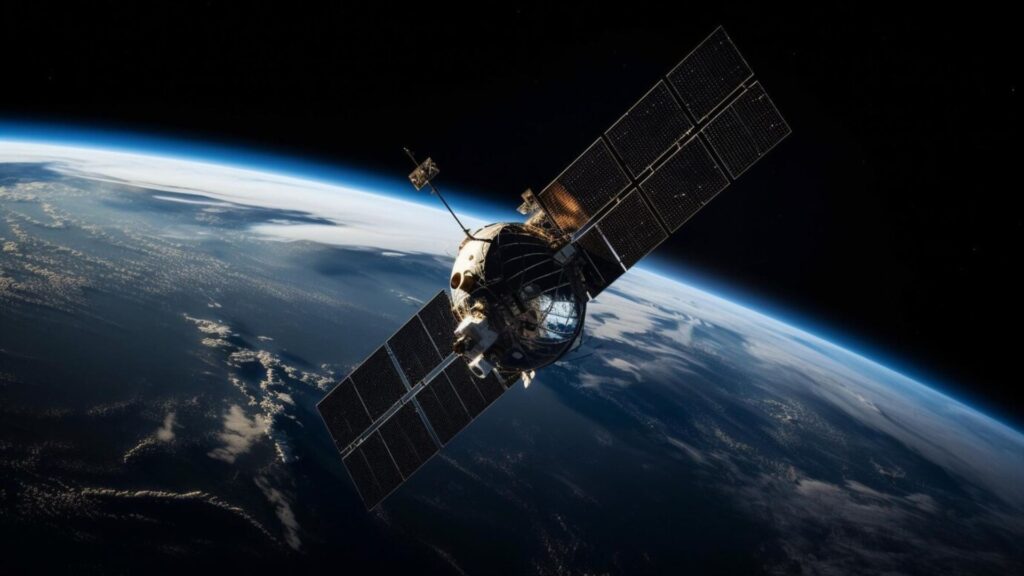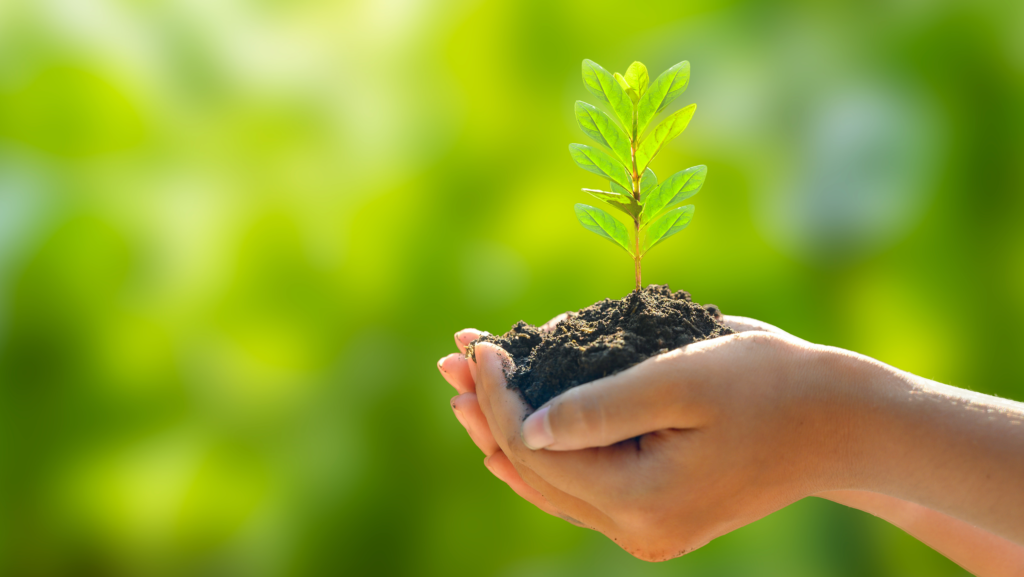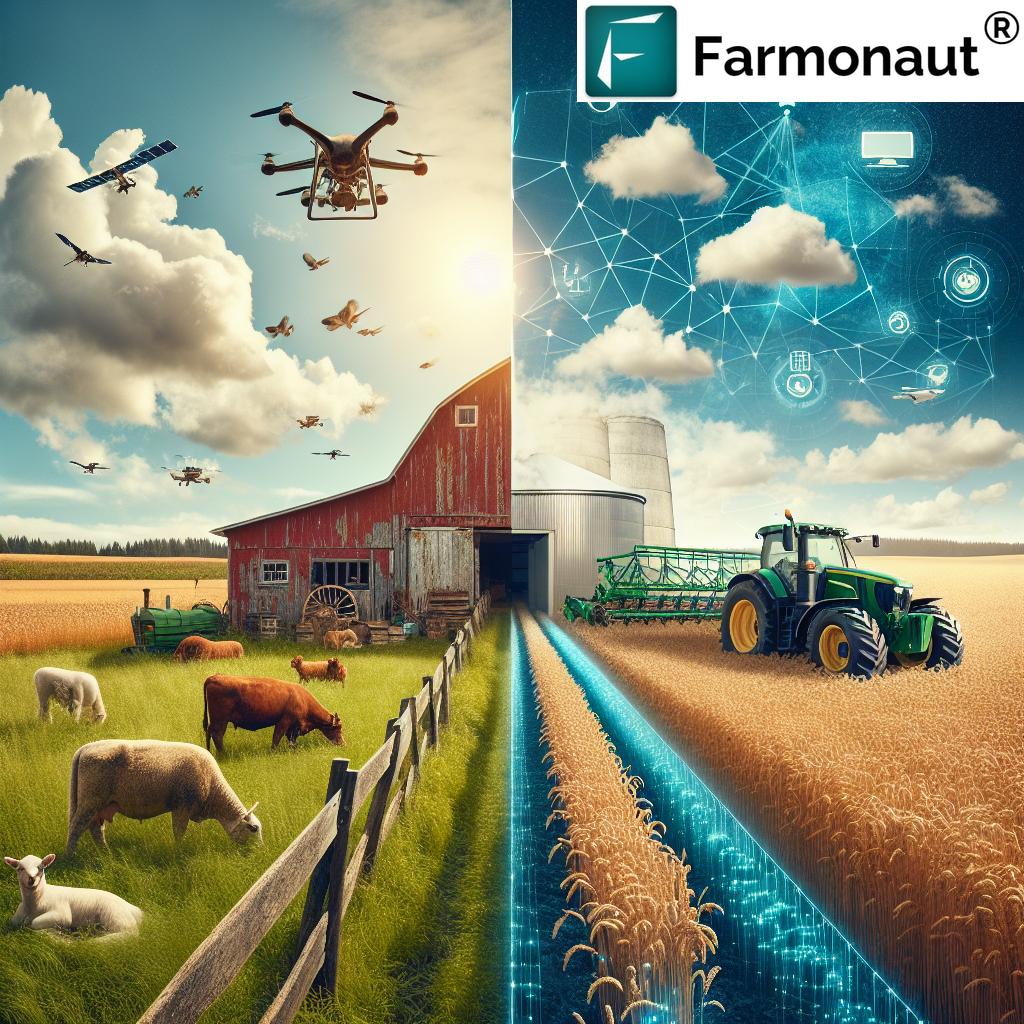
Revolutionizing Agriculture: The Power of Precision Farming and Remote Sensing
In today’s rapidly evolving world of agriculture and horticulture, we are witnessing a remarkable transformation. The integration of cutting-edge technologies like precision agriculture, remote sensing, and satellite imagery is revolutionizing the way we approach farming. These advancements are not just improving crop yields and farm productivity; they’re also paving the way for more sustainable farming practices. At Farmonaut, we’re at the forefront of this agricultural revolution, leveraging these technologies to empower farmers and revolutionize farm management.
The Evolution of Agriculture: From Traditional to Smart Farming
The journey of agriculture has been long and fascinating. From the earliest days of human civilization to the present, farming has undergone numerous transformations. Let’s take a brief look at this evolution:
- Traditional Farming: Reliant on manual labor and basic tools
- Mechanized Farming: Introduction of machinery to increase efficiency
- Industrial Agriculture: Large-scale production with heavy use of chemicals
- Sustainable Agriculture: Focus on environmental conservation and long-term viability
- Precision Agriculture: Use of technology for optimized farming practices
- Smart Farming: Integration of AI, IoT, and data analytics in agriculture
Today, we stand at the cusp of a new era in agriculture, where smart farming and precision agriculture are becoming increasingly prevalent. These approaches leverage advanced technologies to optimize every aspect of farming, from soil management to harvest.
The Role of Precision Agriculture in Modern Farming
Precision agriculture is a farming management concept that uses technology to observe, measure, and analyze the needs of individual fields and crops. This approach allows farmers to:
- Optimize resource use
- Improve crop quality and quantity
- Reduce environmental impact
- Increase overall farm efficiency
At the heart of precision agriculture is the idea that farming practices should be tailored to the specific needs of each field, or even each plant, rather than applying a one-size-fits-all approach. This level of precision is made possible through the use of various technologies, including:
- GPS guidance systems
- Sensors for soil and crop monitoring
- Remote sensing technologies
- Variable rate technology for applying inputs
- Advanced software for data analysis and decision-making
Remote Sensing: The Eyes in the Sky for Modern Agriculture
Remote sensing has emerged as a game-changing technology in agriculture. It involves collecting data about objects or areas from a distance, typically using satellites or drones. In the context of farming, remote sensing provides valuable insights into:
- Crop health: Identifying stress factors before they become visible to the naked eye
- Soil conditions: Assessing moisture levels, nutrient content, and other soil properties
- Weather patterns: Monitoring and predicting local weather conditions
- Pest and disease outbreaks: Early detection of potential threats to crops
The power of remote sensing lies in its ability to provide comprehensive, real-time data over large areas. This is particularly valuable for large-scale farming operations or for monitoring agricultural trends at a regional or national level.
Satellite Imagery: A New Perspective on Farming
Satellite imagery has revolutionized the way we view and manage agricultural lands. These images, captured by satellites orbiting the Earth, provide a wealth of information that was previously inaccessible to farmers. Some key applications of satellite imagery in agriculture include:
- Crop monitoring: Regular satellite images allow farmers to track crop growth and health over time
- Yield prediction: Advanced algorithms can estimate crop yields based on satellite data
- Resource management: Satellite imagery helps in optimizing the use of water, fertilizers, and other inputs
- Land use planning: Large-scale imagery aids in agricultural planning and policy-making
At Farmonaut, we harness the power of satellite imagery to provide farmers with actionable insights. Our platform processes multispectral satellite images to generate valuable data on crop health, soil moisture, and other critical parameters.
Vegetation Indices: Measuring Crop Health from Space
One of the most powerful applications of satellite imagery in agriculture is the calculation of vegetation indices. These are mathematical combinations of different spectral bands that highlight specific properties of vegetation. The most commonly used vegetation index is the Normalized Difference Vegetation Index (NDVI).
NDVI leverages the fact that healthy vegetation reflects more near-infrared light and absorbs more red light compared to unhealthy vegetation. By calculating the ratio of these reflectances, we can get a measure of plant health and vigor. At Farmonaut, we use NDVI and other advanced vegetation indices to provide farmers with detailed insights into their crop health.
Crop Health Monitoring: The Key to Optimized Farming
Crop health monitoring is a critical aspect of modern agriculture. It involves regular assessment of crop conditions to identify potential issues early and take corrective actions. Traditional methods of crop health monitoring relied on visual inspection, which was time-consuming and often missed early signs of stress.
With the advent of remote sensing and satellite imagery, crop health monitoring has become more accurate, efficient, and comprehensive. Some key benefits of modern crop health monitoring include:
- Early detection of stress factors (e.g., pests, diseases, nutrient deficiencies)
- Optimization of irrigation and fertilizer application
- Improved yield forecasting
- Better decision-making for harvest timing
Our Farmonaut platform provides real-time crop health monitoring services, enabling farmers to stay on top of their crop conditions and take timely actions to maximize yields.
The Importance of Soil Management in Precision Agriculture
Soil is the foundation of agriculture, and effective soil management is crucial for sustainable and productive farming. Precision agriculture techniques allow for more detailed and accurate soil management practices. Some key aspects of soil management in precision agriculture include:
- Soil mapping: Creating detailed maps of soil properties across fields
- Variable rate application: Adjusting fertilizer and other inputs based on soil needs
- Soil moisture monitoring: Optimizing irrigation based on real-time soil moisture data
- Erosion control: Identifying areas at risk of erosion and implementing targeted conservation practices
At Farmonaut, we integrate soil data with satellite imagery to provide a comprehensive view of field conditions. This allows farmers to make informed decisions about soil management and crop planning.
Irrigation Management: Precision Watering for Optimal Growth
Water is a precious resource in agriculture, and efficient irrigation management is crucial for both crop health and environmental sustainability. Precision agriculture technologies have revolutionized irrigation practices by enabling:
- Real-time monitoring of soil moisture levels
- Weather-based irrigation scheduling
- Variable rate irrigation systems
- Detection of irrigation system issues (e.g., leaks, blockages)
Our Farmonaut platform integrates satellite-derived soil moisture data with local weather forecasts to provide farmers with optimized irrigation recommendations. This not only helps conserve water but also ensures that crops receive the right amount of moisture for optimal growth.
Fertilizer Application: Precision Nutrition for Crops
Efficient fertilizer management is essential for maximizing crop yields while minimizing environmental impact. Precision agriculture approaches to fertilizer application include:
- Soil nutrient mapping
- Variable rate fertilizer application
- In-season nutrient monitoring
- Integration of crop health data for targeted fertilization
By leveraging satellite imagery and advanced analytics, Farmonaut helps farmers optimize their fertilizer use. Our platform provides insights into crop nutrient status, allowing for more precise and efficient fertilizer applications.
Harvest Optimization: Timing is Everything
The harvest is the culmination of a season’s hard work, and optimizing harvest timing can significantly impact crop quality and yield. Precision agriculture technologies contribute to harvest optimization through:
- Accurate yield predictions
- Crop maturity monitoring
- Weather-based harvest planning
- Field-specific harvest scheduling
At Farmonaut, we provide farmers with data-driven insights to help determine the optimal harvest time for their crops. Our platform integrates crop health data, weather forecasts, and historical yield information to support informed decision-making during the crucial harvest period.
Yield Prediction: The Power of Data-Driven Forecasting
Accurate yield prediction is a valuable tool for farmers, allowing them to plan for harvest, storage, and marketing. Modern yield prediction methods leverage a combination of technologies, including:
- Satellite imagery analysis
- Historical yield data
- Weather data integration
- Machine learning algorithms
Farmonaut’s advanced analytics platform combines these data sources to provide farmers with accurate and timely yield predictions. This information helps in making informed decisions about resource allocation, harvest planning, and market strategies.
Farm Management: The Integration of Technology and Tradition
Effective farm management in the modern era requires a blend of traditional agricultural knowledge and cutting-edge technology. Precision agriculture tools support farm management by providing:
- Comprehensive field monitoring
- Data-driven decision support
- Resource optimization recommendations
- Record-keeping and compliance management
Our Farmonaut platform serves as a central hub for farm management, integrating various data sources and providing actionable insights. This empowers farmers to make informed decisions and manage their operations more efficiently.
Agritech: The Technological Revolution in Agriculture
Agritech, or agricultural technology, is transforming the farming landscape. Some key areas of agritech innovation include:
- IoT sensors for field monitoring
- AI and machine learning for data analysis
- Blockchain for supply chain transparency
- Robotics and automation in farming operations
At Farmonaut, we’re constantly exploring and integrating new agritech solutions to enhance our platform and provide more value to farmers. Our commitment to innovation ensures that we stay at the forefront of the agricultural technology revolution.
Sustainable Farming: Technology for a Greener Future
Sustainable farming is not just a buzzword; it’s a necessity for the future of agriculture. Precision agriculture and remote sensing technologies play a crucial role in promoting sustainability by:
- Reducing resource waste
- Minimizing environmental impact
- Improving soil health and biodiversity
- Enhancing crop resilience to climate change
Farmonaut is committed to promoting sustainable farming practices through our technology solutions. By providing farmers with the tools to optimize their resource use and minimize environmental impact, we’re contributing to a more sustainable agricultural future.
Smart Farming: The Integration of AI and IoT in Agriculture
Smart farming takes precision agriculture to the next level by integrating artificial intelligence (AI) and the Internet of Things (IoT) into farming practices. Some key aspects of smart farming include:
- Automated farming systems
- AI-powered decision support tools
- IoT sensors for real-time field monitoring
- Predictive analytics for farm management
At Farmonaut, we’re embracing the smart farming revolution by continuously enhancing our platform with AI and IoT capabilities. This ensures that our users have access to the most advanced and efficient farming tools available.
Crop Monitoring: The Foundation of Precision Agriculture
Effective crop monitoring is essential for successful precision agriculture. Modern crop monitoring techniques involve:
- Regular satellite imagery analysis
- Ground-based sensors and IoT devices
- Drone-based imaging
- Integration of multiple data sources for comprehensive insights
Farmonaut’s platform provides farmers with advanced crop monitoring capabilities, leveraging satellite imagery and AI-powered analytics to deliver real-time insights into crop health and development.
Weather Data: The Critical Factor in Agriculture
Weather data plays a crucial role in agricultural decision-making. Modern farming relies on accurate weather forecasts and historical climate data for:
- Planting and harvest planning
- Irrigation scheduling
- Pest and disease management
- Risk assessment and mitigation
Our Farmonaut platform integrates high-resolution weather data to provide farmers with accurate, field-specific weather insights. This helps in making informed decisions about various farming activities.
Pest Control: Precision Approaches to Crop Protection
Effective pest control is crucial for protecting crop yields and quality. Precision agriculture techniques are revolutionizing pest management through:
- Early detection of pest infestations using remote sensing
- Targeted application of pesticides
- Integration of biological control methods
- Predictive modeling of pest outbreaks
Farmonaut’s crop monitoring capabilities help farmers detect early signs of pest infestations, allowing for timely and targeted interventions. This not only improves pest control efficacy but also reduces the overall use of pesticides.
Agricultural Technology: Shaping the Future of Farming
Agricultural technology is evolving rapidly, with new innovations constantly emerging. Some exciting areas of development include:
- Gene editing for crop improvement
- Vertical farming and controlled environment agriculture
- Autonomous farm machinery
- Advanced data analytics and AI for farm management
At Farmonaut, we’re committed to staying at the forefront of agricultural technology. We continuously update our platform to incorporate the latest advancements, ensuring that our users have access to cutting-edge tools for farm management.
Data-Driven Farming: The Power of Information in Agriculture
Data-driven farming is at the core of precision agriculture. It involves:
- Collecting vast amounts of farm data
- Analyzing this data to extract actionable insights
- Making informed decisions based on data analysis
- Continuously refining farming practices based on data feedback
Farmonaut’s platform is built on the principles of data-driven farming. We provide farmers with the tools to collect, analyze, and act on farm data, enabling more efficient and productive agricultural practices.
Farm Analytics: Turning Data into Action
Farm analytics is the process of analyzing farm data to extract valuable insights. Modern farm analytics involve:
- Big data processing
- Machine learning algorithms
- Predictive modeling
- Visualization tools for data interpretation
Our Farmonaut platform offers advanced farm analytics capabilities, transforming complex farm data into easy-to-understand insights and recommendations. This empowers farmers to make data-driven decisions and optimize their farming practices.
Comparing Traditional Farming with Farmonaut’s Satellite System
To illustrate the advantages of precision agriculture and remote sensing, let’s compare traditional farming methods with Farmonaut’s satellite-based system:
| Aspects | Traditional Farming | Farmonaut System |
|---|---|---|
| Accuracy | Limited by visual inspection and experience | High accuracy through satellite imagery and AI analysis |
| Time Efficiency | Time-consuming manual inspections | Rapid, automated monitoring of large areas |
| Resource Optimization | Generalized approach to resource application | Precise, targeted resource management based on field-specific data |
| Cost-Effectiveness | Potential for wastage and inefficiency | Optimized resource use leading to cost savings |
The Future of Agriculture: Embracing Technology for Sustainable Growth
As we look to the future of agriculture, it’s clear that technology will play an increasingly important role. The integration of precision agriculture, remote sensing, and data analytics is not just improving farm productivity; it’s also paving the way for more sustainable and resilient farming practices.
At Farmonaut, we’re committed to being at the forefront of this agricultural revolution. Our platform continues to evolve, incorporating new technologies and insights to provide farmers with the most advanced and effective tools for farm management.
We believe that by embracing these technologies, we can address the global challenges of food security, environmental sustainability, and climate change resilience in agriculture. The future of farming is data-driven, precise, and sustainable – and we’re excited to be a part of this transformation.
Join the Agricultural Revolution with Farmonaut
Are you ready to take your farming practices to the next level? Experience the power of precision agriculture and remote sensing with Farmonaut. Our platform offers:
- Real-time crop health monitoring
- AI-powered farm management recommendations
- Weather-based decision support
- Resource optimization tools
- And much more!
Visit our website at https://farmonaut.com/app_redirect to learn more and sign up for our services. You can also download our mobile app for on-the-go farm management:
- Android: Farmonaut on Google Play
- iOS: Farmonaut on App Store
For developers interested in integrating our satellite and weather data into their own applications, check out our API documentation at Farmonaut API Docs.
Subscribe to Farmonaut
Frequently Asked Questions (FAQ)
Q: What is precision agriculture?
A: Precision agriculture is a farming management concept that uses technology to observe, measure, and analyze the needs of individual fields and crops. It allows farmers to optimize resource use, improve crop quality and quantity, and increase overall farm efficiency.
Q: How does remote sensing benefit agriculture?
A: Remote sensing provides valuable insights into crop health, soil conditions, weather patterns, and potential pest or disease outbreaks. It allows for large-scale monitoring and early detection of issues, enabling timely interventions.
Q: What is NDVI and how is it used in agriculture?
A: NDVI (Normalized Difference Vegetation Index) is a measure of plant health derived from satellite imagery. It’s used to assess crop vigor, predict yields, and identify areas of stress in fields.
Q: How can satellite imagery improve farm management?
A: Satellite imagery provides a comprehensive view of farm conditions, allowing for more informed decision-making in areas such as irrigation, fertilizer application, and pest management. It also enables monitoring of large areas quickly and efficiently.
Q: What are the benefits of data-driven farming?
A: Data-driven farming allows for more precise and efficient agricultural practices. It can lead to increased yields, reduced input costs, improved sustainability, and better risk management.
Q: How does Farmonaut’s platform work?
A: Farmonaut’s platform uses satellite imagery, weather data, and advanced analytics to provide farmers with real-time insights into their fields. It offers features such as crop health monitoring, yield prediction, and resource optimization recommendations.
Q: Is Farmonaut suitable for small-scale farmers?
A: Yes, Farmonaut is designed to be accessible and beneficial for farmers of all scales, from small family farms to large agricultural operations.
Q: How can I get started with Farmonaut?
A: You can sign up for Farmonaut services through our website or by downloading our mobile app. We offer various subscription plans to suit different needs and farm sizes.
